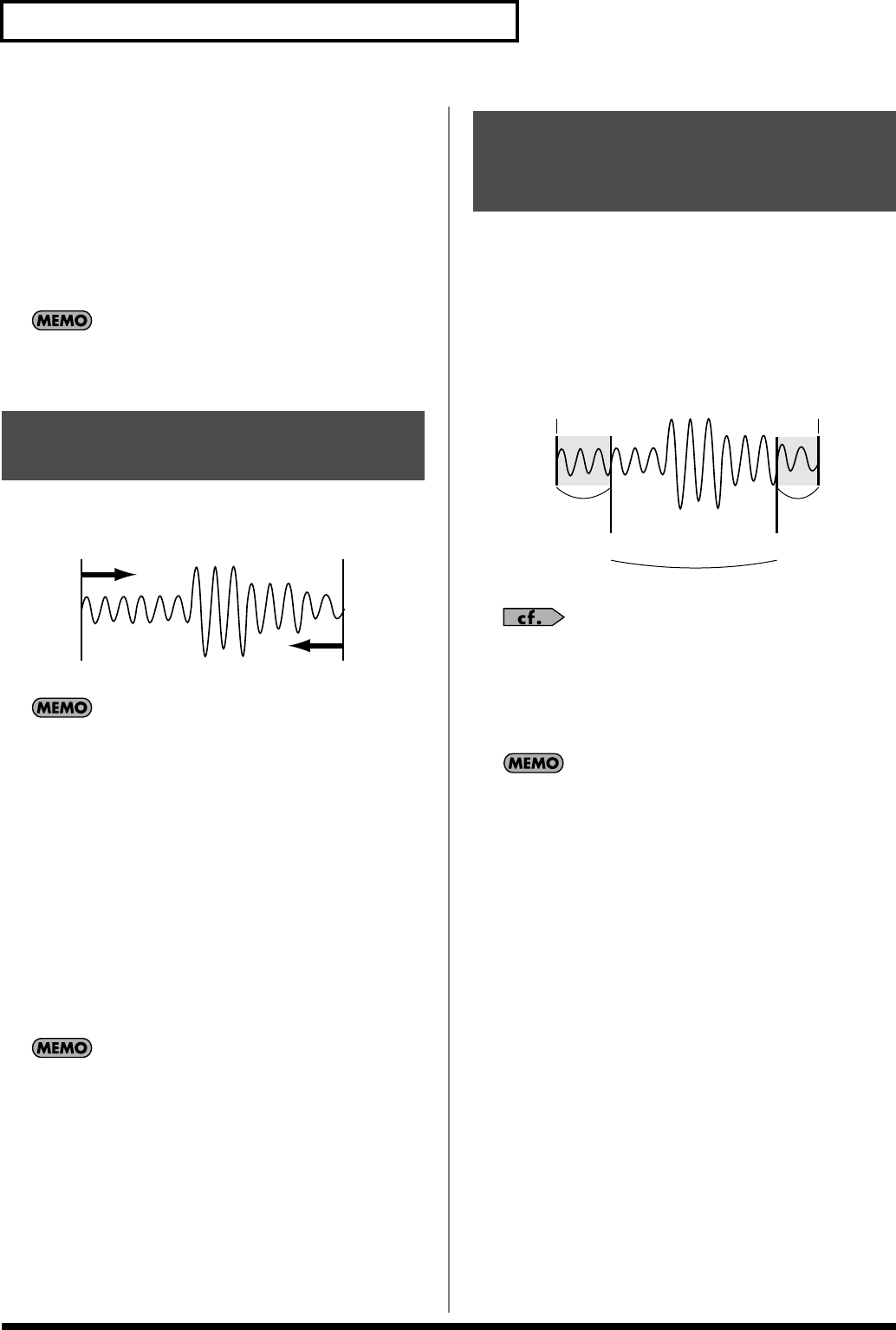
30
Chapter 4. Changing the Settings of a Sample
1.
Make sure that [PATTERN SELECT] is not lighted.
If it’s lit, press [PATTERN SELECT] to switch it off.
2.
Press the pad that plays the sample whose Gate/Trigger
setting you want to change.
The pad lights and the sample begins playing. This pad is now
the current pad.
3.
Press [GATE] to make the button light or go dark.
[GATE] lit: Gate Playback
[GATE] unlit: Trigger Playback
If [LOOP] is not lighted, and the sample plays to the end,
playback will stop automatically and the pad will go dark even
if you continue holding down the pad.
Reverse Playback plays a sample backward, creating an effect similar
to playing a tape in the opposite direction.
You can’t use Time Modify (p. 33) and Reverse Playback at the
same time. If you’ve specified Reverse Playback, the Time
Modify setting is ignored.
1.
Make sure that [PATTERN SELECT] is not lighted.
If it’s lit, press [PATTERN SELECT] to switch it off.
2.
Press the pad that plays the sample whose Reverse
Playback setting you want to change.
The pad lights and the sample begins playing. This pad is now
the current pad.
3.
Press [REVERSE] so it’s lit.
[REVERSE] lit: Reverse Playback
Each time you press [REVERSE], the setting will alternate
between Reverse Playback and Normal Playback ([REVERSE]
unlit).
If you’ve chosen Reverse Playback, the relation between the
Start Point and End Point will be inverted.
For each sample in the SP-404, you can specify the portion of that
sample’s waveform data that will actually play.
The point at which the waveform data will start being played is
called the
Start Point
, and the point at which playback will end is
called the
End Point
.
If the beginning of a sample you recorded contains unwanted noise
or silence, you can set the Start Point to omit this portion. Similarly,
you can set the End Point to omit an unwanted portion at the end.
When you set the Start Point and End Point, the BPM (tempo)
will automatically be calculated and displayed according to the
newly specified duration. If this duration is several measures or
is less than one measure, the displayed BPM value may be half
or double. If you want to correct the BPM to the desired value,
refer to “Changing a Sample’s BPM” (p. 33).
For some time settings (for example three beats), it may not be
possible to calculate or adjust the BPM value correctly.
Playing a Sample Backward
(Reverse Playback)
Normal
Reverse playback
Omitting Unwanted Portions
of the Sample (Marker/Start
Point/End Point)
unwanted
Beginning of
the sample
Start point End point
unwanted
End of
the sample
the portion which is played back
SP-404_e.book 30 ページ 2006年3月3日 金曜日 午後2時46分


















